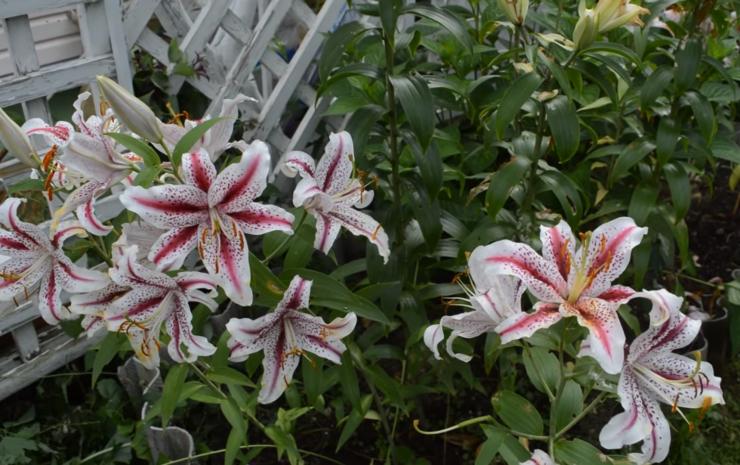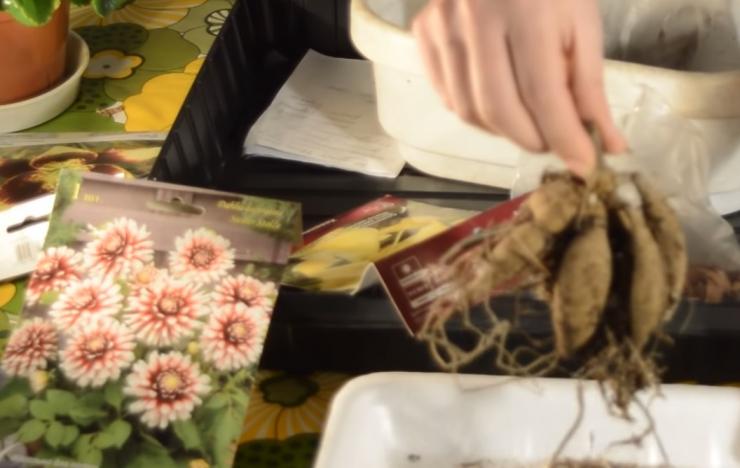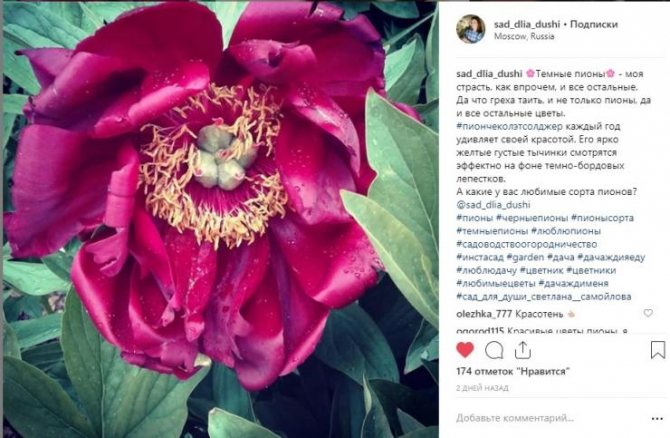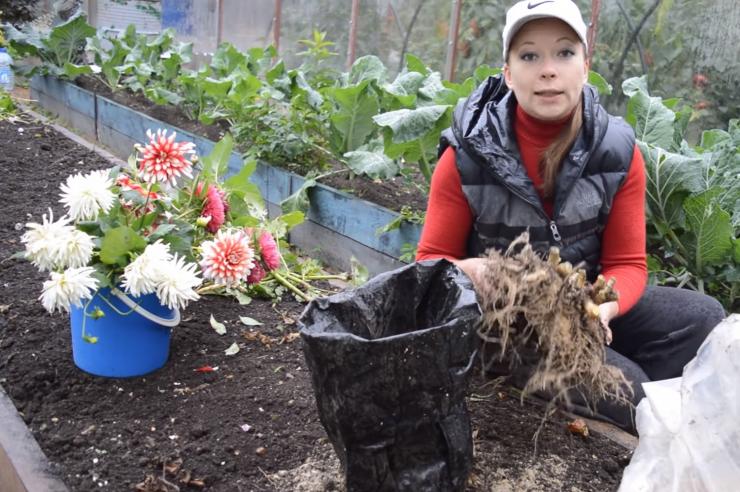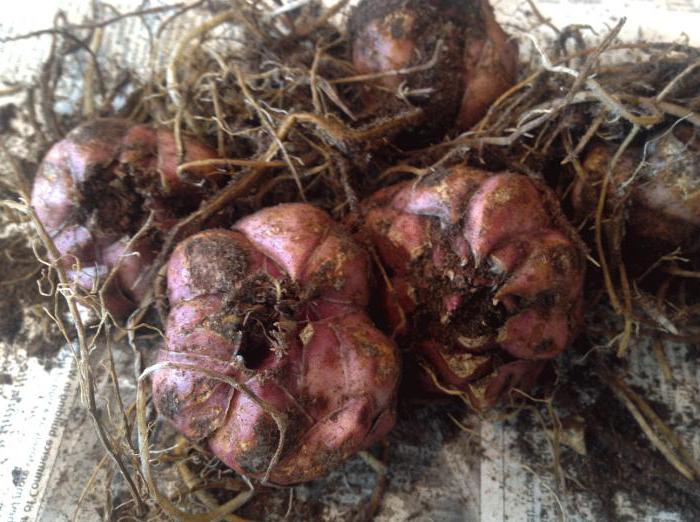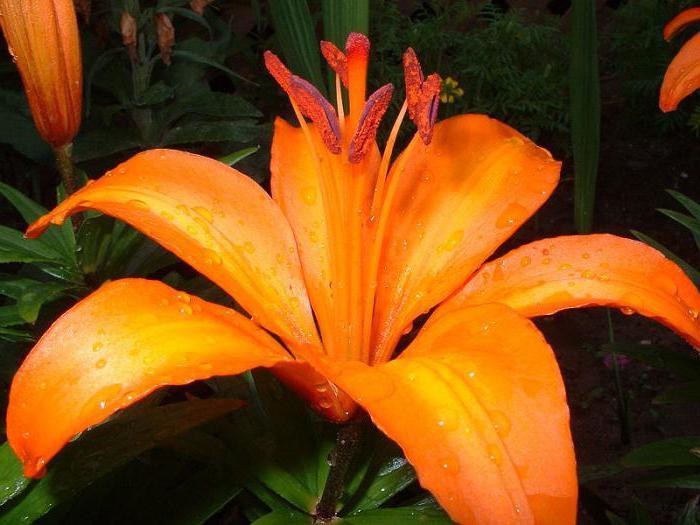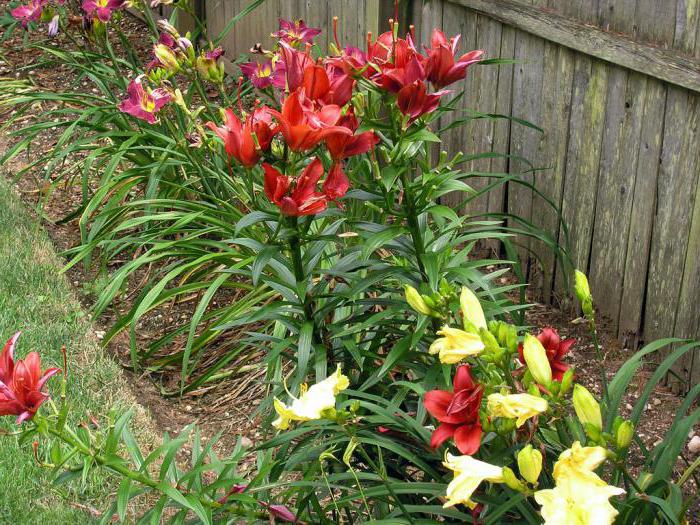Subscribe to updates in our groups.
Let's be friends!
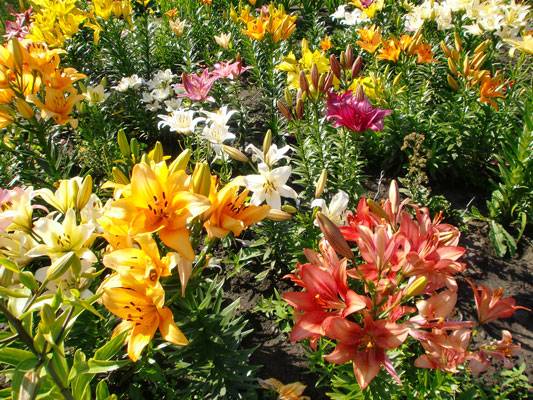
How to preserve lily bulbs before planting?
So you bought lily bulbs. In the spring, lilies can be stored in the refrigerator before planting, it is desirable that the temperature is not higher than +4, this will slightly stop the development of the shoot on the bulb. You can add a little peat or moistened sawdust to the bag of bulbs so that the roots of the lilies do not dry out. If you buy lily bulbs in the fall, try not to overdry the roots as well.
Planting lilies.
As soon as a trip to the garden becomes possible, and the earth thaws on the bayonet of a shovel, lilies need to be planted in the ground. With the early planting of lilies, favorable conditions are created for the growth of roots and the survival of plants in a new place.
The planting depth of lilies depends on the size of the bulb and the texture of the soil. On sandy soils, lilies are planted deeper, on clay soils - smaller. Good drainage is essential for growing lilies. If your garden is in a low area, then lilies are best grown in raised beds.
Before planting, long and dried roots are pruned:


Lilies are planted at 3-4 bulb heights, usually 15-20 cm:


Having dug a hole, they put a handful of sand there, and only after that they place the onion there. Sand is also poured on top of it - thus, the bulb is in a "sand jacket". It is noticed that with such a planting, lily bulbs are less likely to be affected by diseases. If the soil is damp, then the planted bulbs do not need to be watered.
Further care for the lilies is usual - watering and feeding during the growing season.
Watch our video on choosing and planting a lily:
Watering lilies.
Watering lilies must be taken very carefully - they do not like excess moisture, but moderate soil moisture is necessary throughout the entire growing period. The greatest need for water in lilies is observed in the first half of summer, during the period of active growth, as well as after flowering, when the roots grow intensively and there is a process of accumulation of nutrients for the winter. It is best to water lilies at the root, so as not to cause the appearance of fungal diseases. When growing lilies OT, LO, LOO-hybrids, it is necessary to provide that during prolonged autumn rains they will need to be covered with a film so that in winter they leave in relatively dry soil. For the winter, lilies OT, LO, LOO hybrids - cover with a layer of dry leaves. Shelter of lilies is done on frozen ground.
Arrangement of lilies in the flower garden.
Since the lilies of OT, LO, LOO - hybrids need autumn shelter from rain, it is better to plant them separately, not mixing with other groups - Asian hybrids or longiflorum-Asian (LA) hybrids. Lilies look great in groups, clumps of one or 2-3 varieties of one group, for example, a group (3-5 pieces) of OT hybrids or a group of LA hybrids.
What lilies to grow in Siberia?
Description
The lily is a beautiful flower. There are 80 plant species and many hybrids. The flowers are large in size and in various colors. Some have a strong aroma. In shape, the flowers are divided into umbrella-shaped and funnel-shaped. Each of them has 6 petals and pronounced stamens. The leaves of the plant are usually straight.
Flowers look great in bouquets, they perfectly decorate garden plots and apartments. The planting material, thanks to which the plant is obtained, is the bulb. It is rounded, large, with a sharp top. Each bulb has scales, shells. The pith includes the bud from which the stem develops.
Lily is grown from rounded bulbs. The color depends on the species, it is white, yellow, brown, dark purple. The leaves are evenly spaced along the stem and in the leaf axils.
Preparation
How to store lilies in the winter at home? First you need to do the preparation. The stems and leaves should not be cut off after flowering. This is necessary in order for the plants to bloom. Withered shoots should be removed in late autumn. Lily will rest for 1.5 months after the flower is laid. It is important to cut off the ovary after flowering.
Do I need to dig up lilies for the winter? This procedure is essential to preserve the plant. When to dig lilies in the fall? This should be done with the first frost. Performing this work, it is necessary to cut off the dry stem, leaving at least 5 cm from the soil level. Next, you need to cut off the circular gap with a pitchfork to protect against violation of the integrity of the bulb and root system. After that, you must carefully remove them from the ground.
The bulbs should be shaken off, washed with cold water and placed somewhere to dry. Experts advise separating the gap with moss. It is important to carefully examine the flowers - for diseases, rot, affected areas that should be cut off. The pallet must be placed in a dark, cool place, where it will dry for a couple of days. And at high temperatures there is a risk of mold.
After drying, you need to dust the bulbs with fungicidal powder, and then place them in paper containers. You can wrap them up in newspapers. In a cardboard box, you need to make holes for ventilation, put lilies with sawdust or moss, and then put them in a wintering place - in a garage, basement or on a balcony.
When to dig up the bulbs for wintering?
The timing of digging out the bulbs depends on the variety. The following signs will help to determine the most optimal time for this:
- 2-3 months have passed after flowering;
- all the leaves turned yellow;
- foliage began to drop.
Such signs, most often, appear in the third half of September - early October. At this time, you can safely remove the bulbs from the soil. Sometimes it is advised to dig up lilies after the first frost.
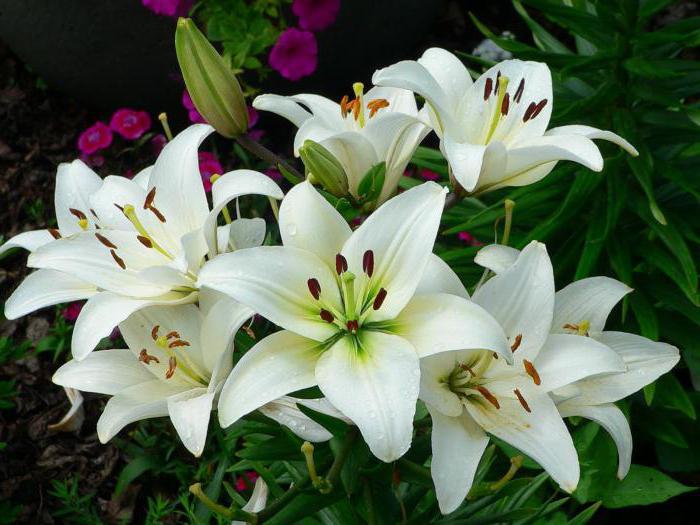

What lilies should you dig up?
Almost all varieties of these flowers are frost-resistant. But it is necessary to find out whether the plant belongs to hybrid forms. Be sure to dig up lilies for the winter if they are varieties such as Oriental, American, tubular and Asian.
And hybrids of LA lilies must be dug up and transplanted every year in any climate, since it is difficult to obtain secondary flowering without this agrotechnical technique. These varieties quickly have a lot of babies that take away nutrients.
For the winter, avoid digging up the Pennsylvanian / Asian hybrid, Matragon, Candidium, Daurian lily, and OA hybrid. The tiger lily is frost-resistant. Other varieties need to mulch the soil with a thick layer of sawdust or spruce paws. And the next layer is a protective shelter.
Agricultural techniques
Growing lilies is a complex process that includes various agricultural techniques. Each of them has a specific meaning. When growing lilies, varieties should also be taken into account, because each has its own characteristics. There are many varieties of culture that are able to withstand the harsh winter, while others will disappear in the soil and in light frosts. Therefore, not all lilies can be dug up.
All lilies need to be dug up
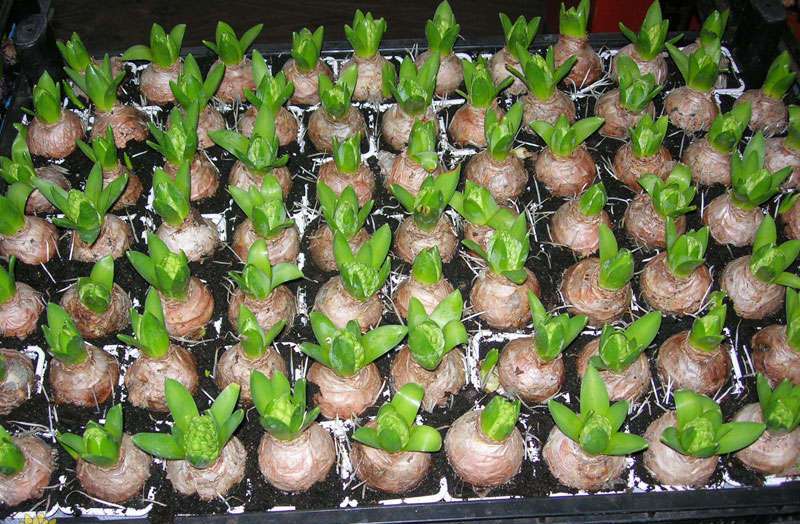

Many lilies are characterized as frost-hardy crops. But you need to find out if the plant being grown belongs to hybrids.
It is imperative to remove tubular, oriental, Asian and American varieties from the ground for winter storage.
If the lily is ranked among the hybrids of LA lilies, then they should be removed from the ground for the winter every year, regardless of climatic conditions. A feature of this variety is the rapid formation of children, if they are not removed, then they will take away all the nutrients from the parent plant.
Do not dig the following plant varieties for the winter:
- Asian hybrid;
- matragon;
- daurian lily;
- Pennsylvania hybrid;
- a hybrid of OA lilies.
You can leave the tiger lily for the winter, it perfectly tolerates the winter. For reliability, soil mulching should be carried out using sawdust and spruce legs. Additionally, fir legs are laid as a shelter.
When and how to dig a lily for the winter


Some varieties drip for wintering. But any flowers, regardless of the frost resistance indicators, should be periodically dug out to remove excess children, as well as transplant to a new place.
For different varieties of hybrids, their own transplantation times apply:
- Asian hybrids and varieties of hybrids of class LA (Longiflorum-Asiatic) should be dug up from 15 to 20 August;
- hybrids of the American type and plants of the OT (Oriental-Tubular) class are not dug up every year, but this must be desired from August 25 to September 1;
- oriental hybrids are removed from the ground only for transplantation and periodic removal of children from September 1 to 5.


You may be interested in:
Planting lilies in open ground and caring for them How amazing the lilies blooming in the open field look, so complex and painstaking the care of these garden ... Read more ...
Digging out flowers is allowed only after the stems have dried.
On a note!
An exception can be made for flowers that will not be stored, but simply dripped for transplantation. In this case, they are removed from the ground no later than September 10, otherwise they will not have time to take root.
How to keep lilies safe
The question of the safety of bulbs is complex and does not have a clear answer. Digging up or leaving plants in the ground for the winter depends on many factors. First of all, from the plant variety itself, as well as the weather conditions of the area.
But sometimes transplanting and digging should be done in order to preserve the decorativeness of the flowers, and also not to get thickets and weak plants on the lip. This can happen if the parent bulb is abundantly covered with babies. They not only thicken the plantings and the flowers become much smaller, but also lead to an insufficient supply of nutrients to the parent plant.
Shelter methods for the winter


To preserve the lilies for the winter, which are planned to be left in their old place, it will be necessary to very much organize a reliable shelter. There are many options.
- In autumn (late September - early October), after cutting off old stems, mulching is carried out using leaves or peat. Nothing else is required, as a thick layer of snow is the best blanket.
- So that the bulbous sprouts do not germinate too early and do not suffer from late frosts, it is possible to cover the beds with lilies with a layer of fallen leaves after the freezing of the ground.
- In the northwestern territories, the best shelter after a slight freezing of the soil is a layer of spruce branches or dry leaves of 10-15 cm.
Storage methods
In order for the bulb to survive until the planting season, it must be properly stored. This is done in several ways. How to keep lily bulbs at home in winter? For this, the following methods are used:
- When germinating, when planted early, it is necessary to plant flowers in flowerpots. Then you need to put them in a lighted cool place to slow down growth.
- Bulbs can be in plastic bags. But first you need to pierce the small ventilation holes.A layer of peat (15 cm) is laid out on the bottom, and then the plants are laid. There should be a peat composition of 10 cm between the lilies. Then the bag must be tied, placed in a cardboard box or container. Everything is left in the chosen storage location.
- Storage of lily bulbs in peat pots is often used. The containers must be placed in a container and placed in a storage area. This is an effective method, since planting can be done immediately with the pots in the soil. Some time before planting, the flowerpots should be left in a warm, lighted place and watered.
Appropriate place
It is important for gardeners to know how and where to store lily bulbs in winter. How to do this is described above. The storage location is also important. There should be a stable temperature - within the range from 0 to +4 degrees. Bulbs should not be refrigerated.
Cellars and cellars are great for storing bulbs in winter. The required temperature, humidity, air permeability are easily achieved in these places. If the bulbs are in the basement, you need to know the temperature of the external environment and, if necessary, close or open the ventilation.
Storage in soil
Do I need to dig up lilies for the winter to preserve them? Many gardeners argue that this is not necessary. Flowers can be left to winter in the soil. The main thing is that there is 10-15 cm of snow, and if there is no precipitation, the plant must be covered with leaf or coniferous composition, spruce branches, peat collection. It is advisable to take needles that do not attract pests by the spring period.
When spring has come, after the soil has thawed, it is necessary to remove the cover before the sprouts appear. This method is used for frost-resistant flower species. If there are oriental hybrids in the soil, then they should be under snow in dry soil. Therefore, during the first 7 days of September, it is necessary to cover the planting site with polyethylene, and remove it with frost.
What varieties should you dig up?
Asian varieties, as well as OT hybrids, tolerate harsh winters. They can withstand very low temperatures. Snow will be the best shelter for them. Oriental hybrid varieties are simply enough to cover for the winter with hay, foliage, or place under hoods.
There are very delicate varieties that die from frost, so it is better to dig them up. These include LA hybrids and tubular lilies. Over the summer, these types of flowers grow overgrown with children, who are still weak. In the spring, these babies will grow to the mother's bulb and will be fed from it.


Shelter for overwintering
Oriental hybrids and other flowers should be preserved using the following method. How to keep lily bulbs until spring in order to do it efficiently? It is necessary to create a trench on the territory of the garden plot, which is snowy in winter and sunny and dry in spring. High-quality drainage or covering to protect from precipitation will prevent stagnation of water in the trench. The trench must be laid out with boards and a roof must be created.
The packed bulbs are packed with bags filled with water. This provides support against atmospheric changes and is considered an excellent indicator of temperature. Freezing water during frost allows you to determine if the bulbs are frozen. You need to cover the storage with a film, since with it there will be no freezing of the lid and the temperature inside will remain. Provides warmth with a layer of cardboard covered with earth, as well as coniferous twigs.
Reproduction during storage
During winter storage, propagation of the required varieties of flowers can be carried out. This is done with scales. They must be separated from the bulb and placed in a solution of potassium permanganate or fungicide for 30 minutes. Then they are dried, placed in pots of peat and stored like all planting material.
In spring, the base of the scales will have young bulbs about 1 cm in diameter. They must be broken off and planted on the garden plot. Everything is separated, after which it should be planted in boxes with a peat-sand mixture.From 1 onion, 2/3 of the scales are obtained.
Lilies are beautiful delicate flowers. Now, in addition to natural species, other varieties are grown, bred by breeders. They have a different spectacular shape and color in various shades. If you know the rules for storing lilies, then by the planting period they remain healthy. In the future, they will grow rapidly and bloom beautifully.
Boarding time
A suitable planting time is after the plants have faded. It starts in late summer and lasts until mid-autumn. If the bulbs were purchased in early spring, planting can be done after the soil has thawed and dried. Planting late in spring can damage young shoots. If the lily bulbs have sprouted, they can be planted.
Spring planting is great for late flowering varieties. These include Rio Negro, White Haven, Rialto, Marco Polo. Large bulbs should be planted at a depth of 25 cm, and small ones at a depth of 3 times the bulb.
If the soil is heavy, there should be sand at the bottom. To protect the bulbs from voles, a wire mesh is laid along the inner walls of the pit. The roots spread out from the bulbs. They should not be twisted or bent upwards. The planting site is stirred with a peg and sprinkled with earth. The well must be watered with settled water and covered with bark mulch. To protect young shoots, the bulbs should be covered with cut-out bottles.
Digging out of the ground
Digging time
It is not difficult to guess the right time to dig up lily bulbs, and you should avoid both too late and early extraction from the soil; in the first case, the bulbs may suffer from low temperatures and be damaged when removed from the soil, and in the second, they may not gain enough strength for wintering, which will significantly affect the germination and quality of spring shoots. The optimal digging time is the first frost.
Cropping, cleaning, sorting
Before using a shovel, cut off dry shoots with a garden pruner, leaving an aboveground part of 7-8 cm.Do not dig the soil too close to the plant, so as not to damage or cut the bulbs with a shovel. After removing excess soil from the roots using running cool water, sort the rhizomes of the lilies, excluding those damaged and affected by the disease. It makes no sense to preserve such bulbs - they will not survive the winter even in the most favorable conditions, but they can destroy healthy ones. Composting infected plants can spread the infection.
Errors
To know how to store lilies at home in winter, you should familiarize yourself with the common mistakes that gardeners may encounter:
- High humidity - the crop will rot, in addition, mold will appear.
- Low humidity - dry bulbs that are not suitable for planting.
- High temperature - untimely germination is observed.
- Low temperature - bud formation is slowed down and when planting, the plant only strengthens. This leads to postponement of flowering.
During the winter, the condition of the bulbs should be checked every 3 months. The emerging mold must be wiped with a damp cloth and sprinkled with charcoal. Rotten places should be removed with a knife, only the blade must be pre-treated with a disinfectant.
The cut area should be treated with brilliant green solution. Affected bulbs must be separated from the entire mass. If the planting material dries up, it must be moistened with filler or wrapped with damp paper.
The good storage conditions of the bulbs ensure rapid growth of the lilies. In this case, you can expect the appearance of fragrant buds. If you know how to store lilies at home in winter, then you can easily start growing even whimsical varieties of graceful flowers.
Storage conditions
Many novice florists are interested in how to store lily bulbs at home.There are several ways to solve this issue, so everyone can choose the most optimal option for themselves, allowing them to keep the bulbous during the winter period.
Storing lily bulbs in the refrigerator is a fairly common method. They are laid out in plastic bags, placed in the fruit and vegetable compartment and kept at temperatures from zero to five degrees. This mode allows the planting material to slow down development, but not freeze. First, small holes should be made in the bags, and when laying the bulbs, sprinkle with dry peat. The disadvantage of this method is that the fruits are constantly releasing ethylene, which makes it difficult for the lily planting material to breathe. Also, the refrigerator lacks the required ventilation, the same can be said about the cellar.
It is best to store the planting material in a cool room with an average humidity level, separate from fruits and vegetables, for example, it can be a glazed balcony or loggia, a garage, a shed.
They must be kept at a constant temperature from zero to five degrees, there must be good ventilation or the possibility of regular ventilation. If the humidity is high, then the planting material quickly grows moldy and rot, and if it is low, it dries out.
The prepared planting material should be sorted by size and distributed in paper bags filled with dry peat moss or vermiculite so that the specimens do not touch each other. You can wrap each of them with a piece of newspaper. Instead of bags, you can use boxes with ventilation holes in the bottom, filled with shavings or softwood sawdust. It is better to store the bulbs by laying them in one layer and sprinkling them with moss, they should be checked weekly. When rotten or moldy specimens come across, they must be disposed of immediately.
You can preserve lily bulbs using peat pots. To do this, they need to be filled with a peat-sand mixture, planting material should be placed in them and placed in the basement. Half a month before planting in open ground, they are transferred to a bright and warm room and begin to water the bulbs. During this time, sprouts should appear in healthy planting material.


This method is very convenient, since the bulbs can be planted in the ground directly with the pots, while they will already have a sufficiently developed root system that will not be injured during transplantation.
Preservation methods
Lilies can be stored in various ways. It can be placed in paper or boxes, or you can use more complex, but no less reliable options.
- If the lilies germinate prematurely, and it is far from being transplanted to a permanent place, then flowers should be planted in temporary flowerpots. The flower pot is then placed in a cool area.
- Lilies are kept in plastic bags. Holes are pierced in them. At the very bottom, a layer of peat 15 cm is poured. Onions are placed on it. The plants are sprinkled with earth again, the bulbs are laid again. After the end of the procedure, the bag is tied and placed in a cardboard storage box.
- Some people practice placing the bulbs in peat pots. The containers are placed in a container and placed in a suitable storage location. It is very convenient to use peat planting pots, since in spring they can be planted with crops. A few days before transferring to a permanent place, the pots are brought out to warmer conditions.
Acceptable storage location


The best place for preservation is a room with a constant temperature regime of 0 to 5 degrees and medium humidity, where there are no fruits and vegetables. In the role of such a room, you can choose a balcony, loggia, shed or garage.
An important condition for successful storage is the availability of ventilation.The planting material is sorted out in accordance with the size, and then laid out in packages, alternating with a layer of peat or wrapped in paper.
Ventilated drawers as storage containers. Lilies are shifted with moss, or sprinkled with shavings or sawdust of coniferous trees.
Features of storing lilies at home


There are many ways to store bulbs. One of the most common is the use of a refrigerator in an apartment. In this case, the bulbs are folded into bags, placed in the compartment for placing vegetables and fruits, where the temperature is maintained from 0 to 5 degrees. This will prevent the bulbs from freezing, but will also prevent their early germination.
Storage conditions for lily bulbs in winter
Compliance with the storage conditions will help keep the lily bulbs for the winter without loss.
- It is necessary to maintain an optimal temperature regime.
- The room where the bulbs will be stored must be sufficiently humid, otherwise they will lose moisture and wrinkle.
- If the humidity in the room is very high, the bulbs may germinate ahead of time or start to rot.
- The room must be ventilated. Without access to fresh air, mold and all kinds of fungi may appear on the bulbs, which will then lead to the development of the disease.
Mulching for the winter
In temperate climates, you can leave lilies outside for the winter without digging up. Don't do anything with the plant until it wilts. To do this, give up watering. Wait for the stem and leaves to wilt by themselves, do not cut them. This will enable the bulbs to store enough energy for the winter. Soil that is too moist is not suitable for wintering lilies, so always take care of the soil drainage system before planting the bulbs. This can be achieved by adding gravel or perlite to the holes.
Another prerequisite for storing lilies in the ground is to grow the bulbs above the water level. To do this, create a small tubercle over each bulb. This will protect them from decay.
Now the most important moment for such wintering is mulching. You can put a layer of straw or pine needles on top. Some mulch the soil with decayed horse manure. You can use leaf humus with the addition of ash as mulch. Mulch will not only warm the soil. It will also protect and improve its properties. Mulching will enrich the land with useful elements, protect it from weathering and freezing. In the spring, lilies will begin to actively develop, as the soil under the mulch remains loose. Mulch is a kind of clothing for the soil.
How to prepare lily bulbs for storage
Experienced growers do not recommend pruning the deciduous part of lilies and stems after flowering. This will allow the bulbs to take in the nutrients they need to bloom in summer. As soon as the shoots wither, and this happens in late autumn, you can start harvesting. After a period of inception of a lily flower, it takes 1.5 months to rest. After flowering, the ovary is necessarily cut off.
The signal for digging lily bulbs out of the soil for storage is the first winter frosts. At this time, the dry stem is cut off, leaving about five centimeters. For digging, use a pitchfork, not a shovel. They make a neat slit in a circle, and then carefully remove the bulb from the soil. It is shaken off the ground, then washed under cold water. The bulbs are placed in a container loosely to each other to dry. Some growers lay moss between the bulbs.
It is recommended to conduct a thorough examination of flowers for the presence of affected and putrefactive areas, diseases. Damaged material must be weeded out. Place the tray with the bulbs in a cool, dark place, where they can dry out in two days, if the temperature is too high, mold and mildew may form.
After the bulbs have dried, dust them with fungicidal powder.The prepared planting material is placed in paper bags; you can simply wrap each lily with newspaper several times. The bulbs are placed in a cardboard box along with moss or sawdust, in which holes must be made for ventilation. Any place for wintering can be - a balcony, a basement, a garage.
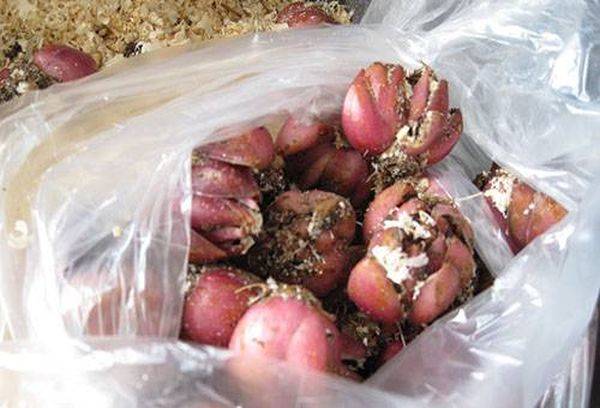

All About Lily Bulbs
Depending on the variety and age, the bulbs range from 12 cm in diameter to 22 cm. This does not apply to "babies": they are small, no more than 1 cm in diameter. Each year, the volume increases by 2 cm. After a couple of years, the first flowers (sometimes - after a year). There are few of them, they are not very large. The plant reaches full maturity by 5 years. Then the bulb is gaining maximum condition. A powerful plant with large buds grows from such material.
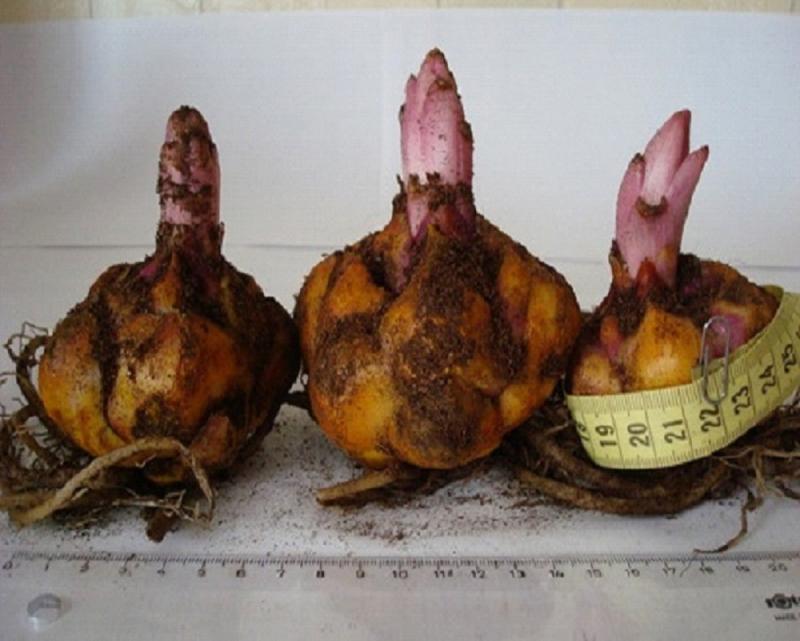

All About Lily Bulbs
A ripe large onion is covered with "kids". After digging up, they are easily separated from the mother. The main thing is to try to get the whole family out of the ground. Lilies should be kept indoors. If some amount remains in the soil, then it is:
- loss of future planting material;
- unintended germination of lilies during a successful wintering.
Although, if climatic conditions permit, "children" can be left for growing right on the site. You just need to better cover the planting bed.
Note! Peat, decayed foliage, needles and so on can be used as a covering material.
How to keep lilies for the winter. Storage methods
How to preserve lily bulbs before planting? There are several storage options. If the plant has sprouted, and it is too early to plant it, you need to plant it in flowerpots. Then put in a cool, well-lit place to slow down growth.
You can put the bulbs in plastic bags by puncturing small holes in them to allow air to enter. A layer of peat is placed on the bottom, lilies are placed on them. There must be a peat layer of at least 10 cm between the plants. The bag is tied, placed in a container or cardboard box and placed in a storage area.
Peat planting pots are also suitable for storage. The containers are placed in a container and stored in a chosen place. The method is the most practical and convenient, since planting can be done immediately with the pots. Before planting, the flowerpots are placed in a lighted warm place, watering begins.
What if the bulbs start to grow?
In the event that the plants managed to germinate before planting, you need to transplant them into flowerpots. Peat is suitable for transplanting; it is also contained in purchased soil. A 1 - 2 cm layer of soil is poured onto the bottom of the container, the bulb is installed strictly vertically. If the sprout has grown too much, you can set it slightly on its side.
After that, you need to pour more soil, closing the workpiece by 7 - 9 cm. There is no need to pull the sprout 3 cm in size to the surface of the soil, it will come out on its own. Store the flowerpots in a bright but cool place to slow down growth.
How to choose storage space
The storage location is important for the safety of lilies. The temperature regime is important, which must be constant. Best of all, if the temperature is at the level of 0 ... + 4 ° С. Experienced growers do not recommend storing lily bulbs in the refrigerator, since there is not enough ventilation there. As practice shows, such storage significantly reduces the stock of planting material.
It is most convenient to store lilies in a cellar or basement. They are ideal because they are easy to achieve the required temperature, ventilation and humidity. During the winter, it is necessary to take into account what the air temperature is outside in order to open or close the ventilation duct as necessary.
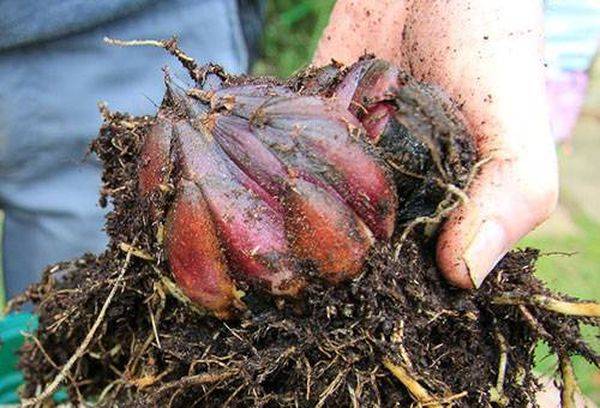

How to store lilies in the winter at home
In a refrigerator. Storing lily bulbs at home is possible in the refrigerator.The bulbs are placed in a bag into which moist peat is poured. The planting material bag is stored on the bottom shelf of the refrigerator. It should be borne in mind that when storing lilies in the refrigerator, you cannot store fruits there. They release ethylene, which is harmful to lilies.
In the basement, garage. These premises are suitable only when they are sufficiently insulated and the temperature, even in severe frosts, does not drop much below zero. A layer of sand or peat is poured into a container (container or box); it should be slightly damp. A layer of bulbs is placed on this layer, covered with sand or peat again. You can make several layers, the top layer should be a covering. The container is covered with a damp burlap.
On the loggia or balcony of the apartment. How to store lily bulbs in winter? A box with thermal insulation can be installed on the balcony. The body of an old refrigerator, which is installed near the wall of the building, is suitable for additional protection from frost. It should be borne in mind that in severe frost, the bulbs can freeze. Jack of all trades will be able to improve the old refrigerator box by installing a thermometer inside to control the temperature and several incandescent bulbs, which can play the role of heaters when the temperature drops.
How to store lily bulbs before planting in spring in peat, compost?
In a favorable environment, the excavated planting materials are preserved very well. You can use a few tips on how to properly store lily bulbs. Very often peat or compost is used for storage. To do this, take a dense plastic bag, pierce small holes of 3-4 mm in it. Place 10 cm of peat bedding or compost at the bottom of the bag. Lay the bulbs on top of each other, without pressing them to the edge of the bag. Sprinkle them on top with the same layer of peat. Then add a second layer of onions. Fill it up. Once you have packed all the material in this manner, tie the bag and place it in a suitable container or box.
It is best to place this box in a cool dry basement with multiple vents. The temperature of such a storage should be from + 1 to + 3 ° С, and the humidity should be up to 45%. Check the condition of the bulbs twice a month to prevent rot and mildew. If you suddenly find mold, then remove it from the bulbs with a clean, dry cloth, and then dust it with ash. If you notice a little rot, then remove it with a knife, and treat the cuts with brilliant green. Store the treated bulbs separately from healthy bulbs.
There is another interesting way to store lily bulbs in peat until spring. You can plant the bulbs you dug in peat pots and place them in your basement. In the spring, 15 days before planting, take the pots out to a warm room and keep until the sprouts hatch. Don't forget to water. Sprouted bulbs can be planted in a flower bed together with pots. This will speed up the development of the plant.
Is it possible to leave the bulbs in the ground
Many growers are wondering if it is right to constantly dig up the bulbs? In fact, about 15 cm of snow cover is enough for high-quality storage, only in this case the lilies will not freeze. And without snow, there is a risk that the bulbs left in the ground will simply die.
Although in warm areas, growers leave lilies for the winter at the place of growth. But it is better to play it safe by covering the beds with peat collection, spruce branches, coniferous paws. Coniferous cover is the most optimal, since in the spring there will be no breeding ground for pests. At the first thaw in early spring, it is necessary to remove the cover.
It should be remembered that this storage method is only suitable for frost-resistant varieties. When growing varieties Orienal Trumpet and other oriental hybrids, it is necessary to ensure that they are in dry soil at the time of the first rainfall.In the first week of September, you can cover the beds with polyethylene, remove it when the first frosts hit.
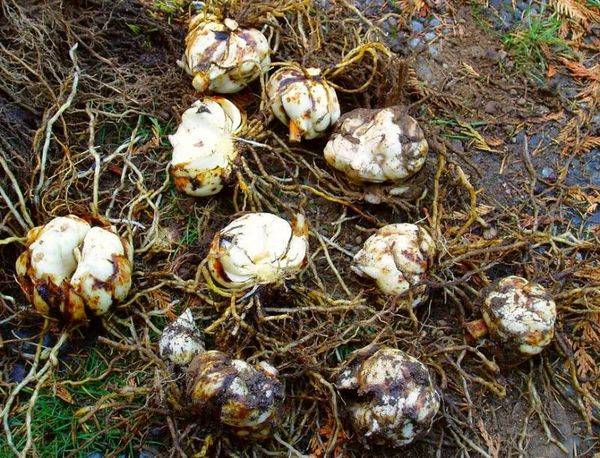

Shelter of lilies for overwintering
Sometimes you need to do more than just preserve the lily bulbs that were dug up with your own hands. There are times when the planting material was purchased before the winter, and it needs to be saved. It is recommended to cover oriental hybrids of different varieties of representatives of the Liliaceae family. To do this, you need to make a trench in the garden area. You need to choose a place for it where it is dry and sunny in spring, and a lot of snow lingers in winter. Good drainage will help avoid stagnant water in the trench. Lay out the trench with boards, make a cover.
Put lily bulbs in bags, pack, put in a trench, transferring bags with water. They will be an excellent indicator of temperature, maintain atmospheric drops. If the water freezes in the cold, then the bulbs will begin to freeze too. The storage is first covered with a film, then closed with a lid. On top, you can add a layer of cardboard, sprinkle with earth, cover with coniferous branches. To protect the material from mice, it is necessary to spread the rodent poison in the trench.
Build a "house" for bulbs in the ground
Oriental hybrids or other new hybrid varieties are best stored differently, although they can also be stored outdoors. You should dig a small trench, deliberately choosing a place for it on your site: the most snowy in winter and driest in spring. It is important that melt water does not stagnate at the bottom of the trench, so it is better to try to ensure good drainage and protection from moisture from above. Reinforce the walls of the trench with boards, prepare the cover. Place bags of water along with the pre-packed bulbs - they will stabilize temperature drops and, in addition, serve as indicators: if the water in them has turned into ice, then the bulbs will freeze. And so that the cover can be removed in winter, place a plastic wrap under it so that it does not freeze. Thermal insulation is also necessary - let it be at least layers of cardboard, sprinkled with peat. Cover the lid with spruce branches or litter - now you can tell yourself that you have prepared your bulbs for spring awakening. The growth and flowering of plants will depend on how you stored the planting material. Create optimal conditions for them, and they will reward your work.
Typical mistakes of novice florists
The main errors are associated with inappropriate storage conditions:
- At low storage temperatures, the setting of flower buds slows down. This can slow down the flowering process or even eliminate it.
- In low humidity, the bulbs quickly become unsuitable for planting as they dry out.
- In high humidity, the planting material becomes moldy and can rot.
- If the storage area is too warm, the bulbs will start to grow prematurely.
- During the winter, be sure to check the bulbs. If mold appears, you need to wipe the planting material with a damp cloth, sprinkle the affected area with a coal composition.
- When rot appears, it is removed with a knife, treating the cut points with a solution of brilliant green. If the bulbs are badly damaged, they are thrown away.

